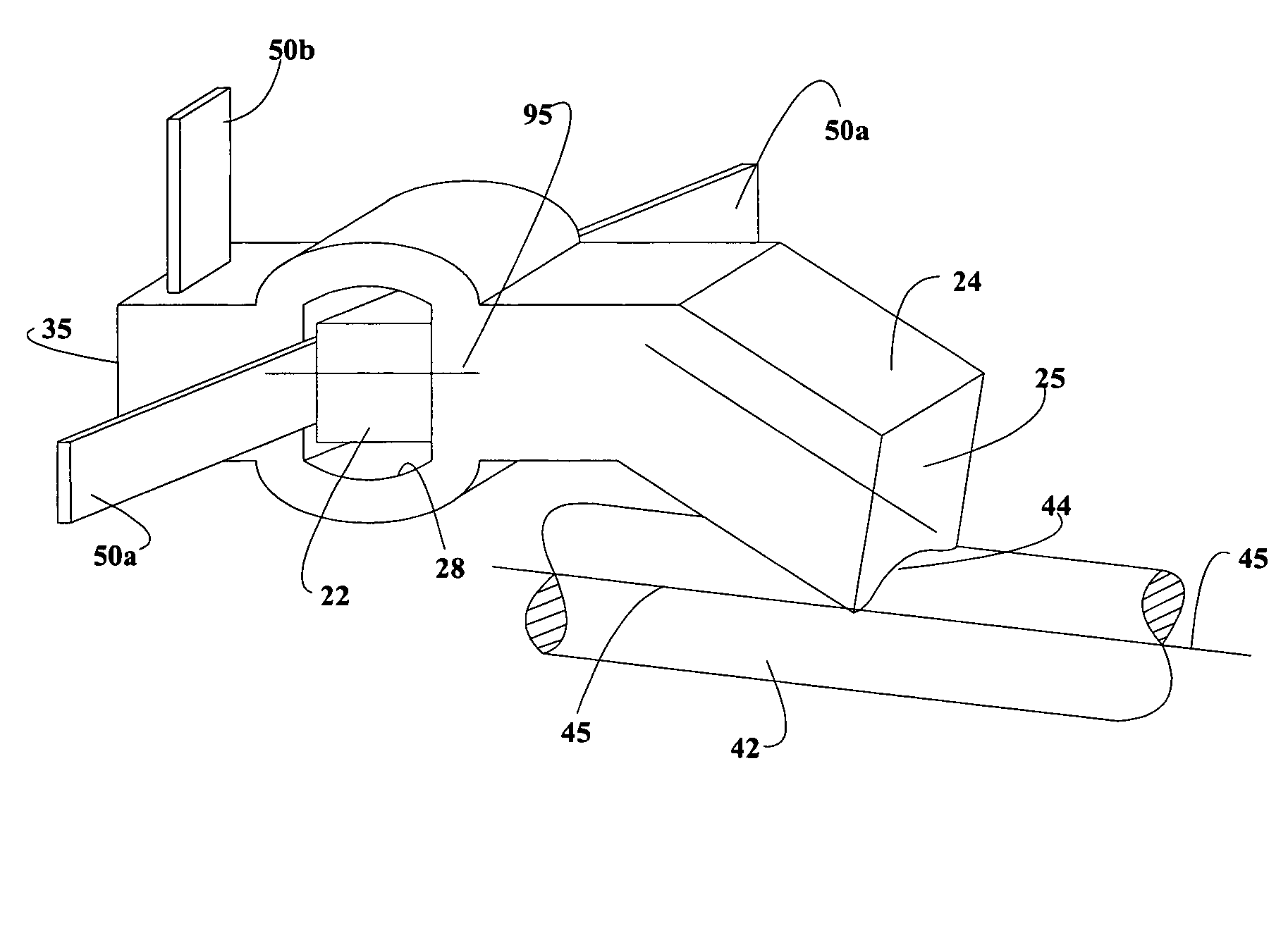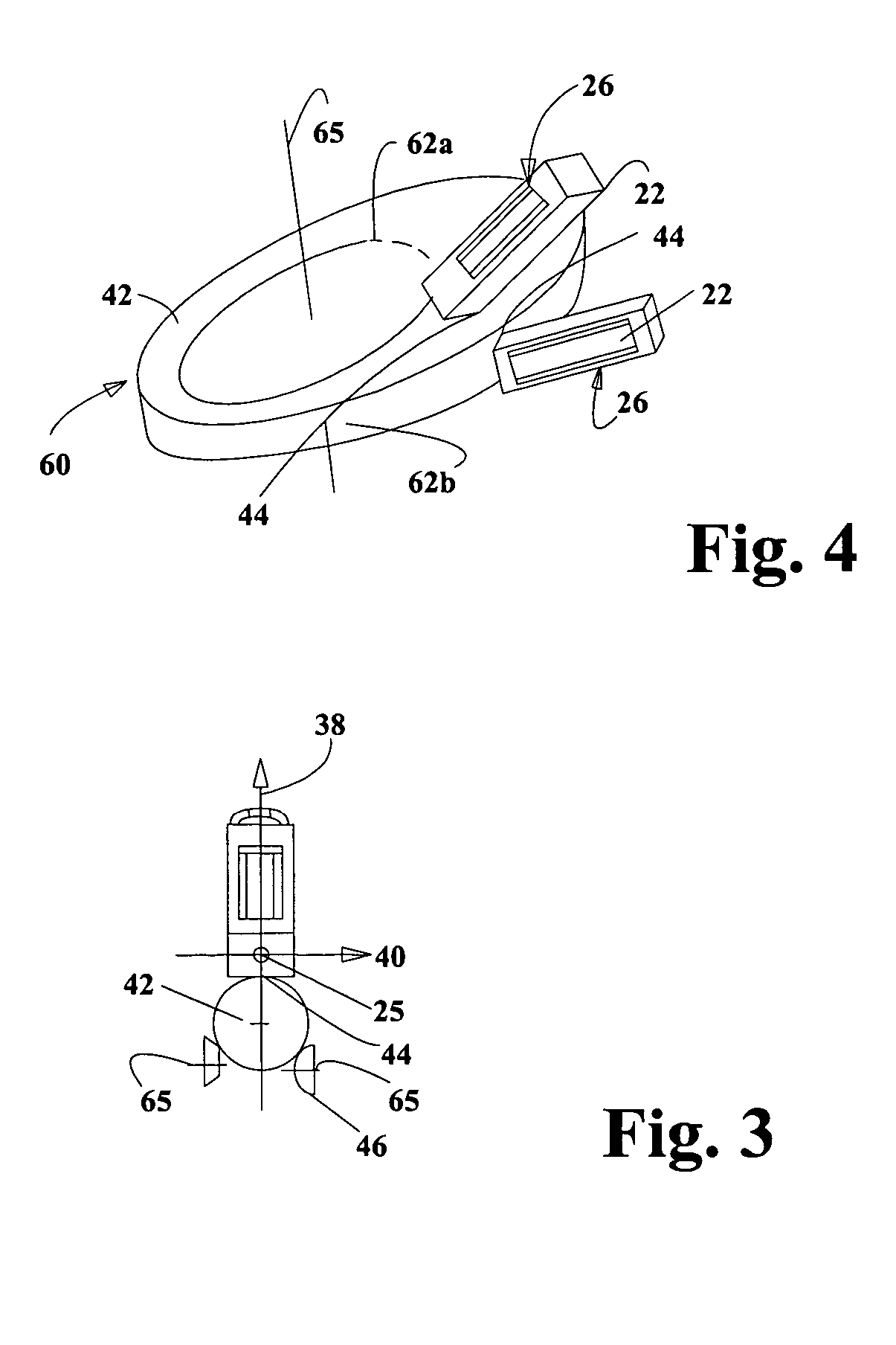Piezomotor with a guide
a technology of piezomotors and guides, applied in piezoelectric/electrostrictive/magnetostrictive devices, piezoelectric/electrostriction/magnetostriction machines, electrical apparatus, etc., can solve the problems of complicated assembly and reliability, excessive cost for many applications, and motors that are too big, etc., to achieve the effect of stabilizing the position of the driven devi
- Summary
- Abstract
- Description
- Claims
- Application Information
AI Technical Summary
Benefits of technology
Problems solved by technology
Method used
Image
Examples
Embodiment Construction
[0114]Several embodiments of the motor of this invention will be described, following which a number of theoretical and practical operational and design aspects of the motors are described. Referring to FIGS. 1-3, and as described in detail at various locations, the piezoelectric motor assembly 20 has an element that converts electrical energy into macroscopic mechanical motion. This is achieved by using a single electrical signal to generate at least two vibration motions at a predetermined location of a vibration element. The at least two vibration motions result in an elliptical motion at the predetermined location. The elliptical motion is selected to cause the vibrating element to engage a driven element during a time corresponding to at least a portion of travel in direction of a long axis of the ellipse, and to disengage or slide over the driven element during a time corresponding to travel in the opposite direction. A second, single frequency results in a second elliptical m...
PUM
 Login to View More
Login to View More Abstract
Description
Claims
Application Information
 Login to View More
Login to View More - R&D
- Intellectual Property
- Life Sciences
- Materials
- Tech Scout
- Unparalleled Data Quality
- Higher Quality Content
- 60% Fewer Hallucinations
Browse by: Latest US Patents, China's latest patents, Technical Efficacy Thesaurus, Application Domain, Technology Topic, Popular Technical Reports.
© 2025 PatSnap. All rights reserved.Legal|Privacy policy|Modern Slavery Act Transparency Statement|Sitemap|About US| Contact US: help@patsnap.com



